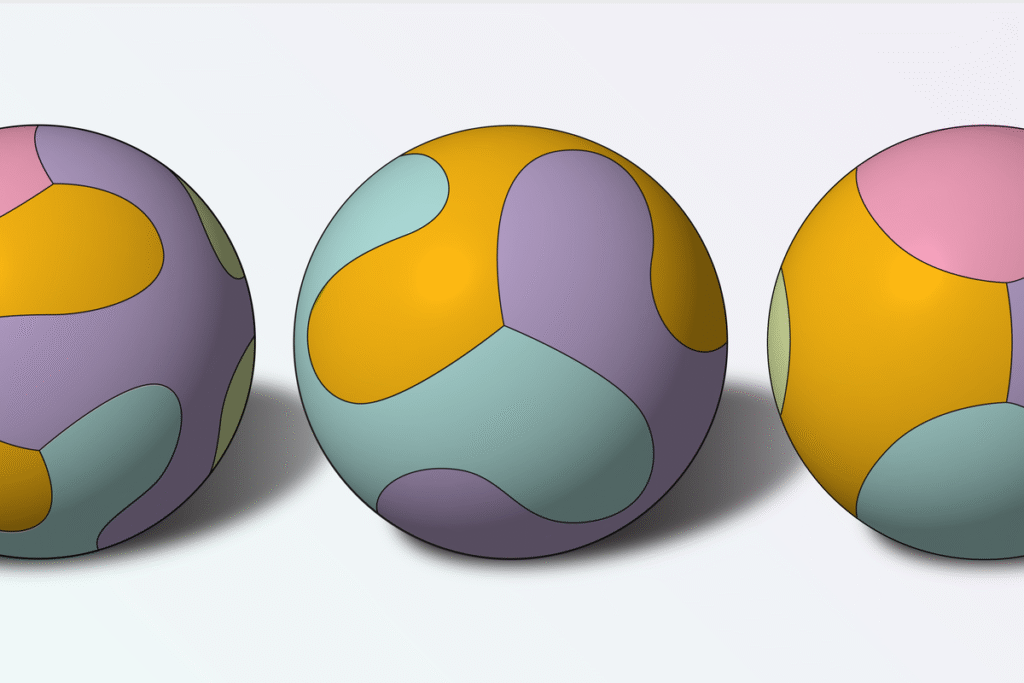The Surprising Math and Physics behind the 2026 World Cup Soccer Ball
Here’s how the new tetrahedron-based design for the “Trionda” soccer ball may affect next year’s big game
Each World Cup brings an exciting new ball design. The 2026 Trionda ball is at center.
Every four years, soccer fans eagerly await the sport’s biggest event: the International Federation of Association Football (FIFA) World Cup. But before each dramatic kickoff, artists and researchers spend years designing, testing and revising the official match ball. Recently images of the planned ball for the 2026 competition were leaked, and its design incorporates math, physics and style in some surprising ways.
Called the Trionda (Spanish for “triwave”), the new ball celebrates the three host nations—the U.S., Mexico and Canada—for the first multinational-hosted World Cup. The ball is stitched together from just four panels, the smallest number yet for a FIFA World Cup ball. And it represents a significant reduction from the 20-paneled Al Rhila ball that was used in 2022.
The design of any soccer ball hinges on an age-old question: How can one make rounded shapes out of flat material? Every FIFA World Cup ball so far has borrowed inspiration from some of math’s simplest three-dimensional shapes: the platonic solids. These five shapes are the only convex polyhedrons built from copies of a single regular polygon where the same number of faces meet at each corner.
On supporting science journalism
If you’re enjoying this article, consider supporting our award-winning journalism by subscribing. By purchasing a subscription you are helping to ensure the future of impactful stories about the discoveries and ideas shaping our world today.

The icosahedron, which has 20 triangle faces and a relatively ball-like appearance, seems promising, but it’s still a bit too pointy to roll around. If we cut off (or truncate) the points of an icosahedron, each of the triangles becomes a hexagon, and each of the points becomes a pentagon.
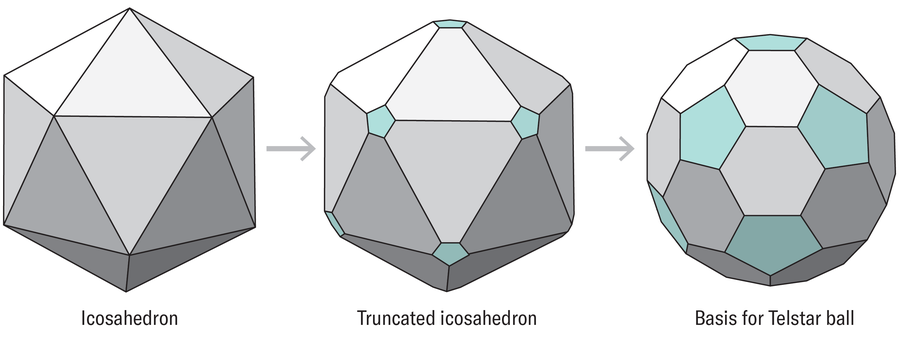
A standard soccer ball is derived from a truncated icosahedron.
This is the shape of the classic soccer ball, originally called the Telstar ball and used in the official FIFA World Cup match in 1970. The stark black-and-white color scheme was meant to increase visibility on black-and-white TVs, which were still prevalent at the time.
The Trionda ball is also based on a platonic solid—the tetrahedron—which at first seems the least ball-like of all the famous shapes. A tetrahedron is made of four triangles, three of which meet at every point. The trick in the Trionda design is in the shape of the panels. Though they have three points like a typical triangle, the panels’ edges are curves that fit together to give the ball a more rounded exterior.
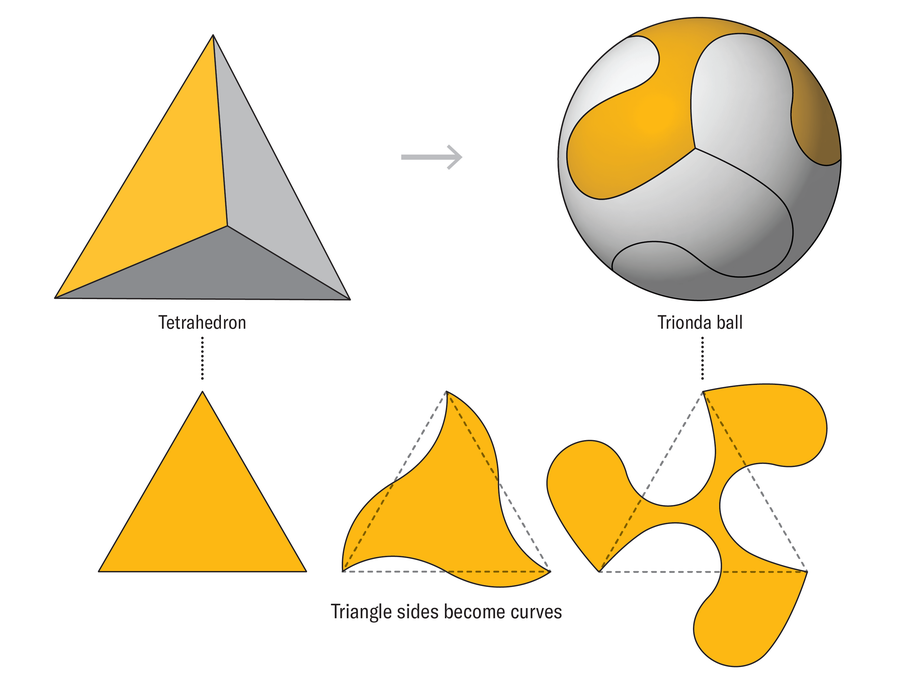
The 2026 World Cup Trionda Ball.
This method of making a pointy platonic solid rounder by curving the edges of the faces may be familiar to soccer fans; in fact, the design of the Trionda ball strongly evokes the Brazuca⁠, a six-paneled ball based on a cube that starred in the 2014 World Cup.
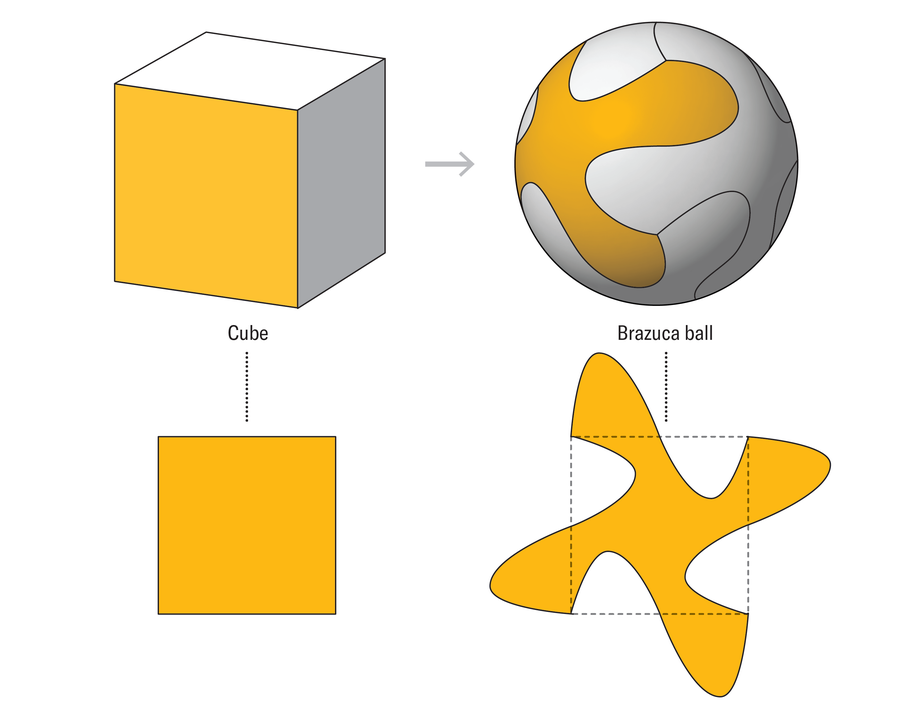
The 2014 World Cup Brazuca Ball.
Basing the Trionda ball on a tetrahedron might be a risky choice; the last match ball based on that shape was highly controversial. The Jabulani ball, whose name means “rejoice” in Zulu, might have been a bit too joyful. Players complained it was unpredictable in the air and didn’t react the way they expected it to. The design of the Jabulani combined both methods of turning a platonic solid into a sphere: cutting off the corners to make eight faces and turning the edges of the faces into curves. It also had a unique feature, shared with none of the official match balls before or since: three-dimensional, spherically molded panels.
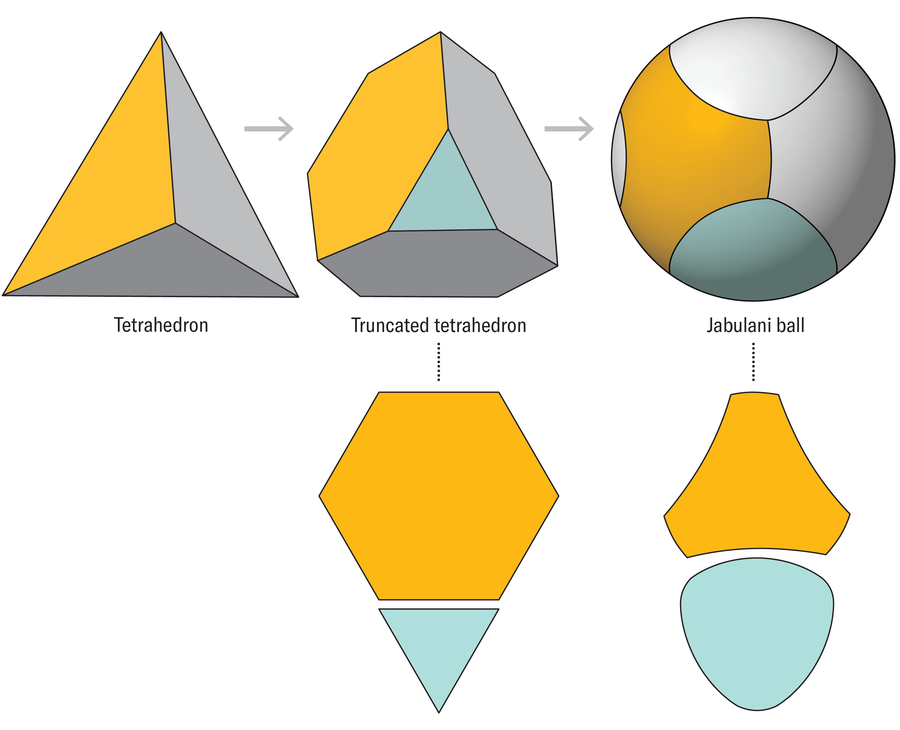
The 2010 World Cup Jabulani Ball.
The Jabulani may have been the roundest ball yet. So why didn’t it work as intended? The answer has to do with “drag”⁠—the force of air particles pushing back on the ball as it flies through space. Typically, the faster a ball moves, the more drag it experiences, which can slow it down and change its trajectory. But each ball also has a “critical speed” past which the drag on the ball decreases significantly. The smoother a ball is, the higher the critical speed barrier becomes. This is why the surfaces of golf balls have dimples: they lower the critical speed and help the balls move faster through the air. These effects mean that rounder and smoother isn’t always better—and may explain the Jabulani’s unpredictable behavior.
The minimization of drag is likely why the Trionda ball has divots in its surface and offers another reason for its meandering seams. Ball designers use a combination of surface texture, seam length and seam depth to achieve just the right amount of “roughness” so that players are comfortable with the ball when they step onto the field.
While the amount of roughness is important, the placement of seams and surface texture can also affect a ball’s reliability in the air. In particular, researchers are concerned about the “knuckleball effect,” named after a kind of baseball pitch. When a ball spins quickly through the air, the placement of its rough elements matters less; the ball moves as if these features are evenly distributed. But if the ball is pitched or kicked in a way that minimizes spin, its rougher areas will feel different amounts of drag than smoother sides, causing it to move unpredictably. This effect is good for a baseball pitcher, who wants to make the ball more difficult for the batter to hit, but not so much for a soccer player, who wants the ball to go precisely where they aim it. To avoid this effect, soccer ball designers often try to make balls as symmetrical as possible; they want a ball to look the same from different angles as it rotates. Symmetry is one concern experts have about the Trionda ball; because it is based on a tetrahedron, it has fewer symmetries than, for example, the classic Telstar ball. Whereas the Telstar ball looks precisely the same in 60 possible positions, the Trionda ball only has 12 rotational symmetries.
Players will be keeping a close eye on how all these qualities might affect the way the ball plays on the field. Keeping track of the ball developments and practicing extensively with the match ball is “very important,” says Brad Friedel, a retired goalkeeper who played on the U.S.’s respective national teams in two World Cups and two Olympic Games. When testing out a new ball, he says, “you just go through a normal training session and [see] what little nuances it has. Does it only have good grip when it’s dry? Is it good when it’s wet? What’s the flight like on chip crosses?”
Of different ball shapes in general, Julia Grosso, a midfielder for the Chicago Stars Football Club, who has played on the Canadian team in the past two Women’s World Cups, says, “It’s more about how can we work together as a team to win rather than what kind of ball we are playing with.” But she adds that practicing with a particular ball before the game “really helps” to get a feel for how it will react and adjust accordingly.
Players aren’t the only ones who are eager to get their hands on new balls. “I’m dying to hold [the Trionda] to see what it feels like and what the seam structure is like and all that,” says sports physicist John Eric Goff of the University of Puget Sound. Once the ball is officially released, he and his colleagues will do wind tunnel tests to analyze its precise physical properties. While most soccer fans will be rooting for the players, entire networks of artists, engineers and scientists will be rooting for the ball.


